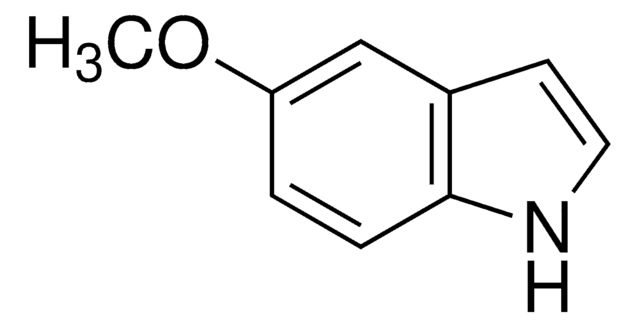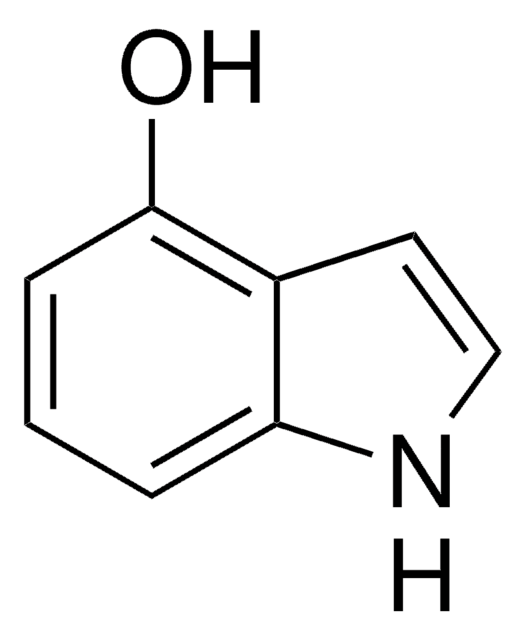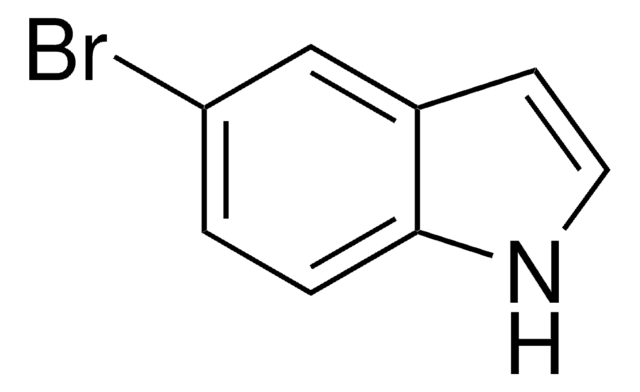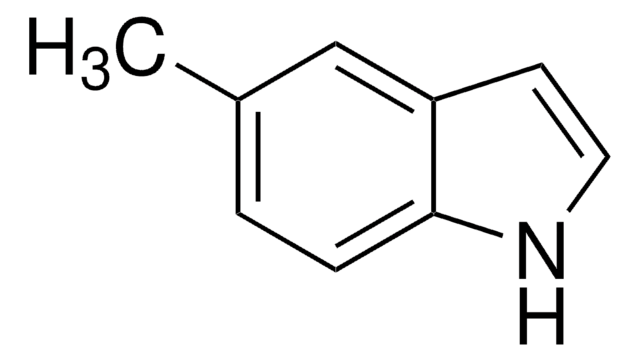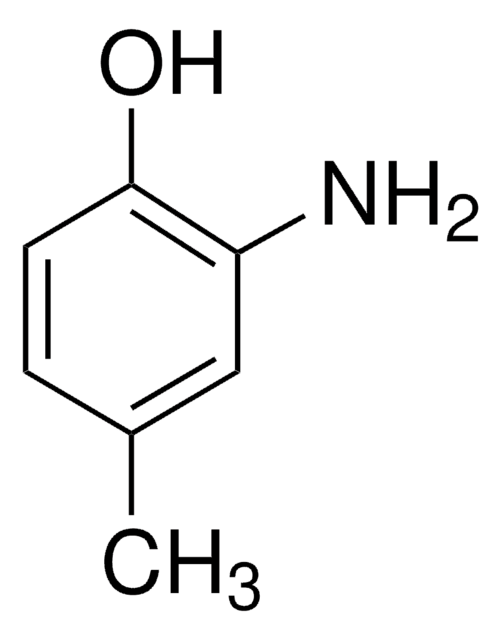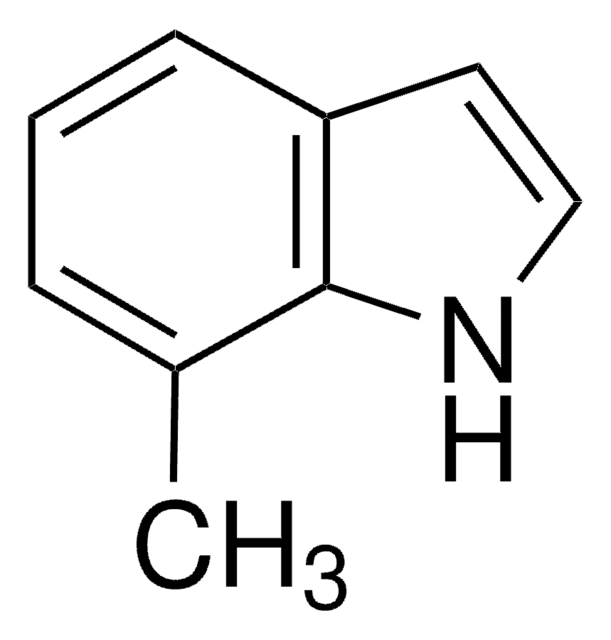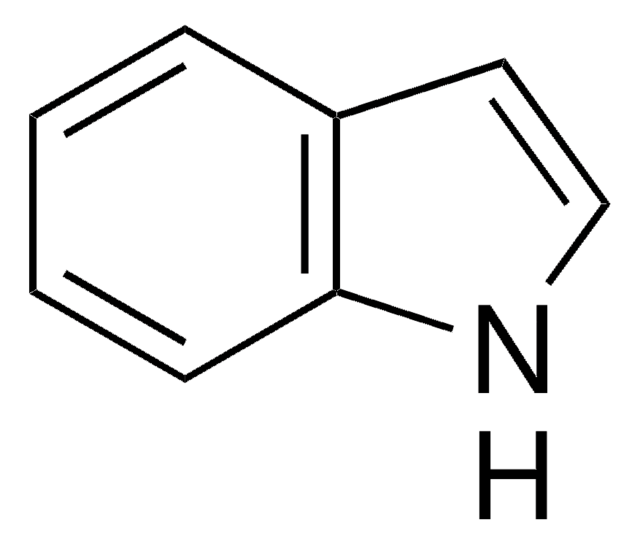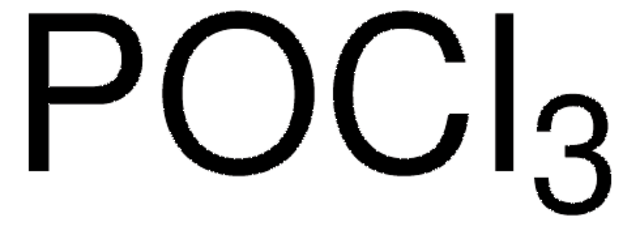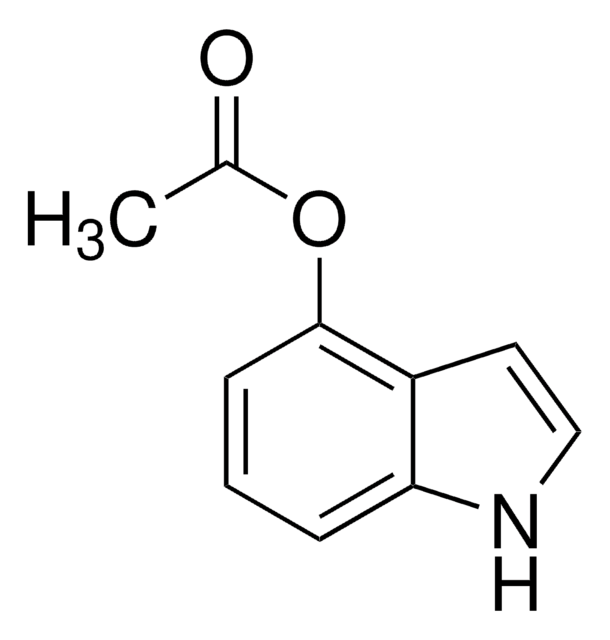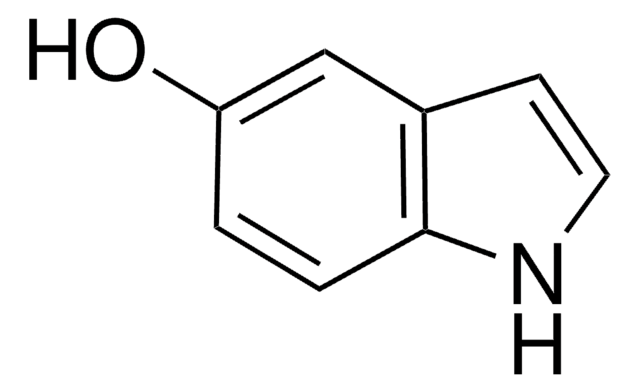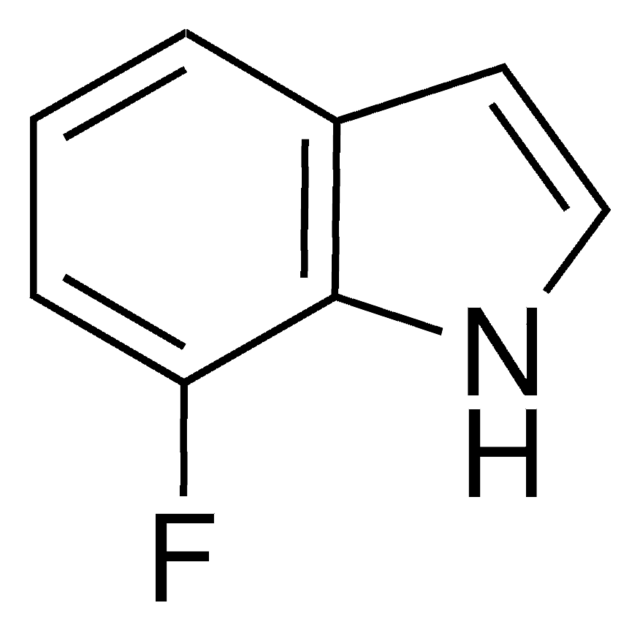Wszystkie zdjęcia(1)
Kluczowe dokumenty
About This Item
Wzór empiryczny (zapis Hilla):
C9H9NO
Numer CAS:
Masa cząsteczkowa:
147.17
Numer MDL:
Kod UNSPSC:
12352100
Identyfikator substancji w PubChem:
NACRES:
NA.22
Polecane produkty
Poziom jakości
Próba
99%
Formularz
powder
bp
181-183 °C/24 mmHg (lit.)
mp
69-70 °C (lit.)
rozpuszczalność
ethanol: 50 mg/mL, clear, faintly yellow
ciąg SMILES
COc1cccc2[nH]ccc12
InChI
1S/C9H9NO/c1-11-9-4-2-3-8-7(9)5-6-10-8/h2-6,10H,1H3
Klucz InChI
LUNOXNMCFPFPMO-UHFFFAOYSA-N
Powiązane kategorie
Zastosowanie
4-metoksyindol został użyty do porównania reakcji kompleksowania β-cyklodekstryny (β-CD) z pindololem przy użyciu chromatografii cieczowej z fazą odwróconą.
Reactant for preparation of:
- GABA analogs
- Sodium-Dependent Glucose Co-transporter 2 (SGLT2) Inhibitors for the Management of Hyperglycemia in Diabetes
- Anticancer agents
- Integrase strand-transfer inhibitors (INSTIs)
- Inhibitor of Proliferation of Colon Cancer Cells
- Isomeridianin G as GSK-3ß inhibitors
- HIV-1 integrase inhibitors
- Inhibitors of mitogen activated protein kinase-activated protein kinase 2 (MK-2)
Ta strona może zawierać tekst przetłumaczony maszynowo.
Hasło ostrzegawcze
Warning
Zwroty wskazujące rodzaj zagrożenia
Zwroty wskazujące środki ostrożności
Klasyfikacja zagrożeń
Eye Irrit. 2 - Skin Irrit. 2 - STOT SE 3
Organy docelowe
Respiratory system
Kod klasy składowania
11 - Combustible Solids
Klasa zagrożenia wodnego (WGK)
WGK 3
Temperatura zapłonu (°F)
Not applicable
Temperatura zapłonu (°C)
Not applicable
Środki ochrony indywidualnej
dust mask type N95 (US), Eyeshields, Gloves
Wybierz jedną z najnowszych wersji:
Masz już ten produkt?
Dokumenty związane z niedawno zakupionymi produktami zostały zamieszczone w Bibliotece dokumentów.
Klienci oglądali również te produkty
Carmen Gazpio et al.
Journal of pharmaceutical and biomedical analysis, 37(3), 487-492 (2005-03-03)
The complexation with beta-cyclodextrin (beta-CD) has been investigated using reversed-phase liquid chromatography. The compounds tested have been pindolol and, for comparison purposes, indole and 4-methoxyindole. The retention behaviour has been analysed on a Kromasil 100 C18 column and the mobile
Brenden Barco et al.
Nature communications, 10(1), 3444-3444 (2019-08-03)
Plants synthesize numerous ecologically specialized, lineage-specific metabolites through biosynthetic gene duplication and functional specialization. However, it remains unclear how duplicated genes are wired into existing regulatory networks. We show that the duplicated gene CYP82C2 has been recruited into the WRKY33 regulon
Thomas Heine et al.
Applied biochemistry and biotechnology, 181(4), 1590-1610 (2016-11-11)
The enantioselective epoxidation of styrene and related compounds by two-component styrene monooxygenases (SMOs) has targeted these enzymes for development as biocatalysts. In the present work, we prepare genetically engineered fusion proteins that join the C-terminus of the epoxidase (StyA) to
Jung Min Song et al.
International journal of pharmaceutics, 477(1-2), 96-101 (2014-10-15)
Indole-3-carbinol (I3C), a constituent of commonly consumed Brassica vegetables, has been shown to have anticancer effects in a variety of preclinical models of lung cancer. However, it has shown only limited efficacy in clinical trials, likely due to its poor
Tien-Yuan Wu et al.
Journal of pharmacokinetics and pharmacodynamics, 42(4), 401-408 (2015-07-04)
3,3'-Diindolylmethane (DIM) has been investigated as a potential anti-cancer chemopreventive agent in many preclinical and clinical studies. In this study, we sought to characterize the pharmacokinetics of DIM and to build a pharmacokinetic (PK) and pharmacodynamic (PD) model of the
Nasz zespół naukowców ma doświadczenie we wszystkich obszarach badań, w tym w naukach przyrodniczych, materiałoznawstwie, syntezie chemicznej, chromatografii, analityce i wielu innych dziedzinach.
Skontaktuj się z zespołem ds. pomocy technicznej